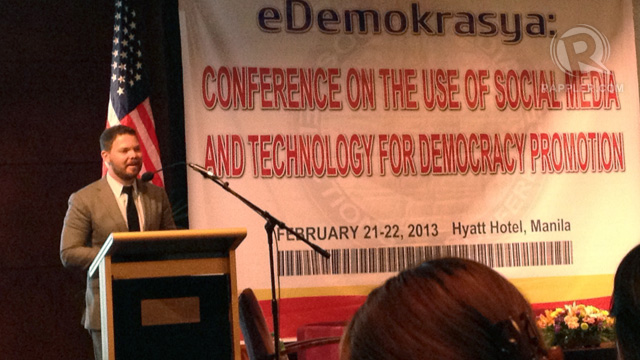SUMMARY
This is AI generated summarization, which may have errors. For context, always refer to the full article.

WASHINGTON DC, USA – They say the traffic in Manila is the worst in the world. I’ve spent 6 days in the Philippine capital on a speaking tour with the US State Department, so I can say this is true: from 8 in the morning til 10 o’clock at night, be ready to sit stock still for much of your journey through Manila’s weaving urban highways and narrow by-streets. It’s not acrimonious, just slow.
Drivers won’t betray any flashes of frustration or real anger, and the colorful, custom artwork adorning the Jeepneys (along with the driver’s music of choice) lends an overall sense of amicability to the inefficient progress. My trusty guide from the embassy summed it up thus: “Everyone is always happy to change lanes, even though we aren’t going anywhere.”
If the Manila traffic is an easy metaphor for standard Filipino politics, it stands in stark contrast to the nation’s dynamic social media landscape. Forget Jeepneys – no jetliner could keep pace with the Philippines’ explosion of access and activity online. While just 32 million of the 90 million+ citizens have web access, Google expects that number to double within 3 years – an important factor in their recent decision to open a Manila office.
The rise of social media here is due in large part to the onward march of smartphones into the daily lives of millions. At 111% penetration, there are now more mobile phones in the Philippines than there are Filipinos.
Combine mobile web access with the opinionated culture and you will start to understand why nearly all web-connected Filipinos have accounts on social networks. The young bloggers, journalists, and activists that I met in Manila showed off an intuitive sense for the conversational, dialogue-driven realm of digital – good representatives of what locals like to call “The Social Media Capital of the World.”
It isn’t just young people either – legacy leadership is starting to pay attention. Based on my discussions, all the major traditional news organizations are working hard to understand the value and opportunity that digital media represents (this was true for reporters and business leaders alike). Crucially, the national election commission (COMELEC) is also beginning to invest in digital tools to improve voter access and election accountability – even if they are taking cautious first steps.
Over the next few days I’ll share more thoughts and insights from my time in the Philippines, including a closer look at the role of social media in the upcoming May elections. – Rappler.com
Chris Talbot is President and founder of Talbot Digital. An expert in online communication, he is a prominent voice in the use of social media in elections. His clients include Maryland Governor Martin O’Malley, Rock The Vote, Fortune 100, and the US Department of State. This article is the first in a series of entries from Chris’ recent trip to Manila. It was was first published on the Talbot Digital Blog.
Add a comment
How does this make you feel?
There are no comments yet. Add your comment to start the conversation.